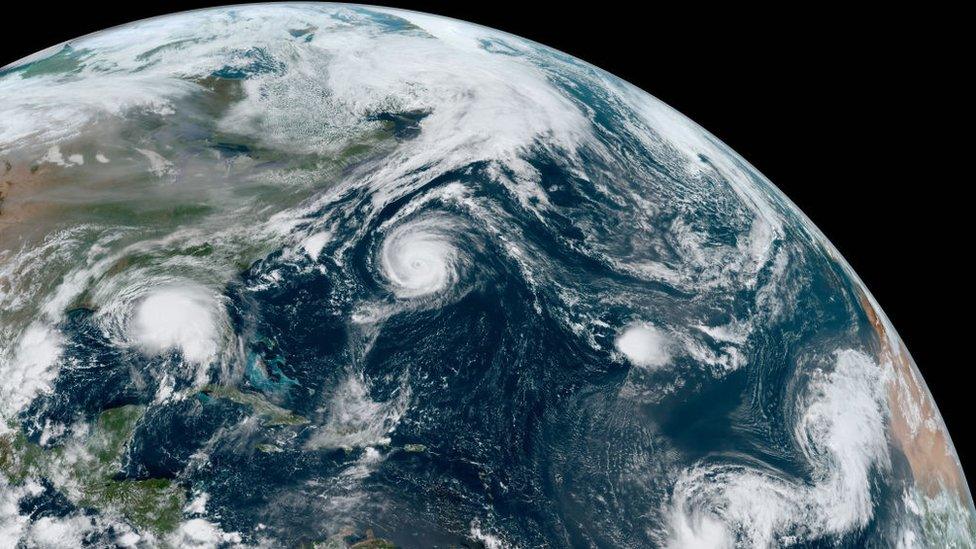Francine brings floods and power cuts to Louisiana and Mississippi
Louisiana streets flooded as Hurricane Francine hits Gulf Coast
- Published
Francine has left hundreds of thousands without power and caused widespread flooding after slamming the coast of Louisiana before driving inland.
It made landfall in Morgan City as a Category 2 hurricane at 17:00 local time (23:00GMT) on Wednesday, carrying winds of 100 mph (155 km/h), the National Hurricane Center (NHC) said.
Francine rapidly weakened into a tropical storm before diminishing further into a depression on Thursday morning.
It was moving over central Mississippi on Thursday morning with 35 mph winds and is forecasted to head north toward Tennessee and the eastern edge of Arkansas, the NHC said.
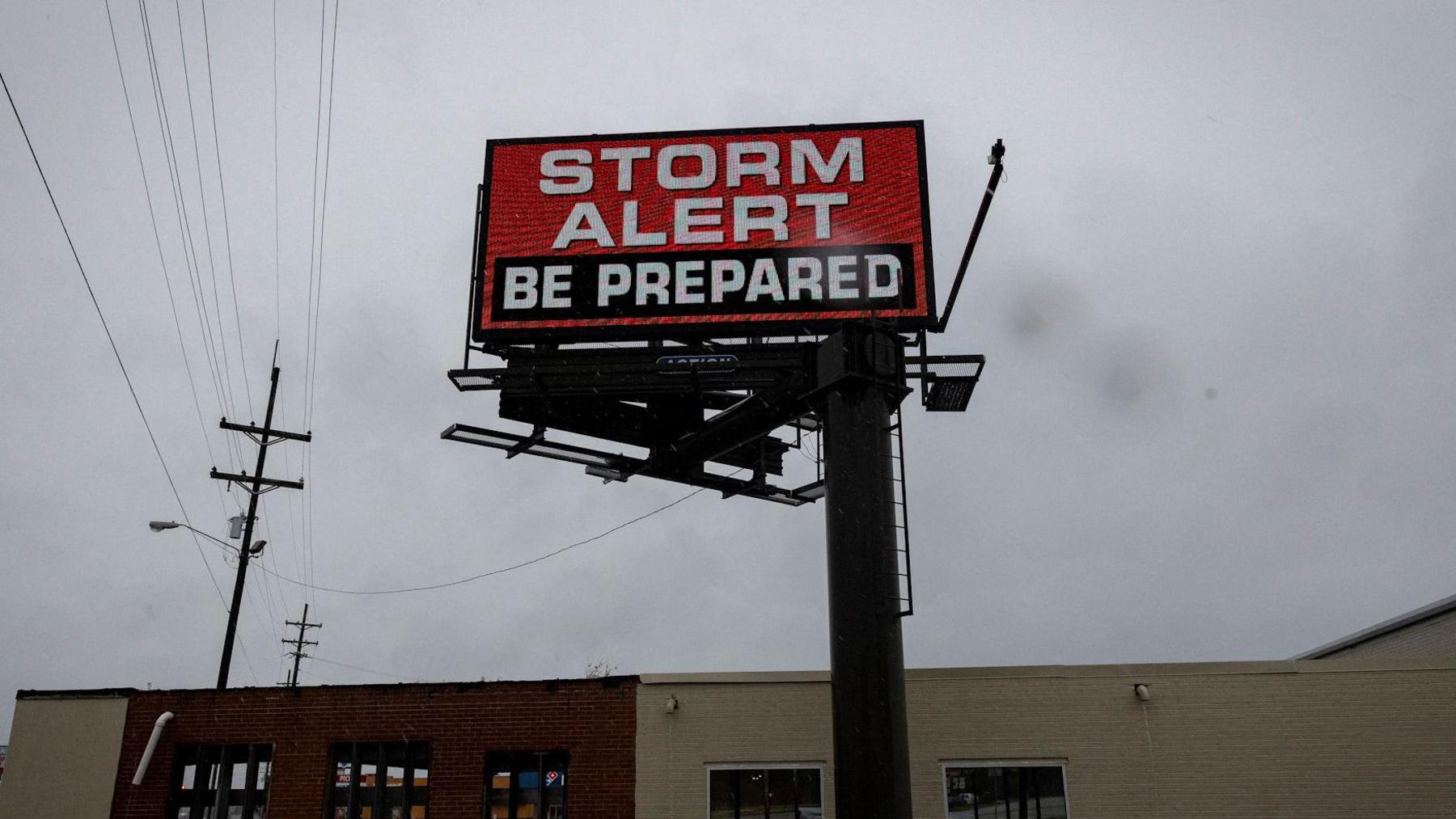
A sign in Morgan City, where Hurricane Francine made landfall in Louisiana
Both Louisiana and Mississippi declared states of emergency and told residents to take shelter and brace for the major storm.
Louisiana Governor Jeff Landry said at a press briefing on Wednesday that residents should "stay off the roads, stay home and stay put".
By Wednesday evening, the National Weather Service issued a flash-flood emergency warning, the most severe flood alert.
Heavy rain blanketed roadways and poured into houses.
Emergency crews in Lafourche Parish rescued 26 residents trapped in flooded homes, according to the sheriff's office, external, after inches of rain soaked the area.
Winds ranging from 60-80mph (96-128km/h) downed trees in Baton Rouge. A Louisiana State Police officer helping clean debris there was hit by a tree and transported to a local hospital, local news reported.
Francine is expected to continue to "rapidly" lose strength as it travels across Mississippi, forecasters say. It is forecast to weaken to a post-tropical cyclone by the evening.
The storm is still dropping heavy rain across Mississippi and its neighbours in Alabama, Arkansas and Florida, where 3in (7.6cm) to 6in is expected. Some areas in Alabama and the Florida Panhandle could see up to 10in of rainfall, leading to flash floods.
About 350,000 homes and businesses in Louisiana had lost power as of Thursday morning, according to Poweroutages.us. A combined 72,000 are seeing outages in Mississippi and Alabama.
BBC Weather Presenter Ben Rich with the latest on the track of Hurricane Francine
Officials in Jefferson Parish, part of Greater New Orleans, urged residents to stay home due to "severe street flooding" late on Wednesday.
Meanwhile the Morgan City Police Department said the city was experiencing "unusual amounts of flooding" and asked people not to drive on flooded streets.
Residents in eastern Louisiana, Mississippi, southern Alabama and western Florida had been warned of a life-threatening storm surge.
A storm surge means there is a danger of water rising from the coastline and moving inland. In some places, water may rise up to 10ft (3m).
Several of the state's coastal parishes are under voluntary or mandatory evacuation orders. Some schools and colleges have closed.
US oil and gas companies on the Gulf of Mexico, including Exxon Mobil and Shell, evacuated staff and paused some operations.
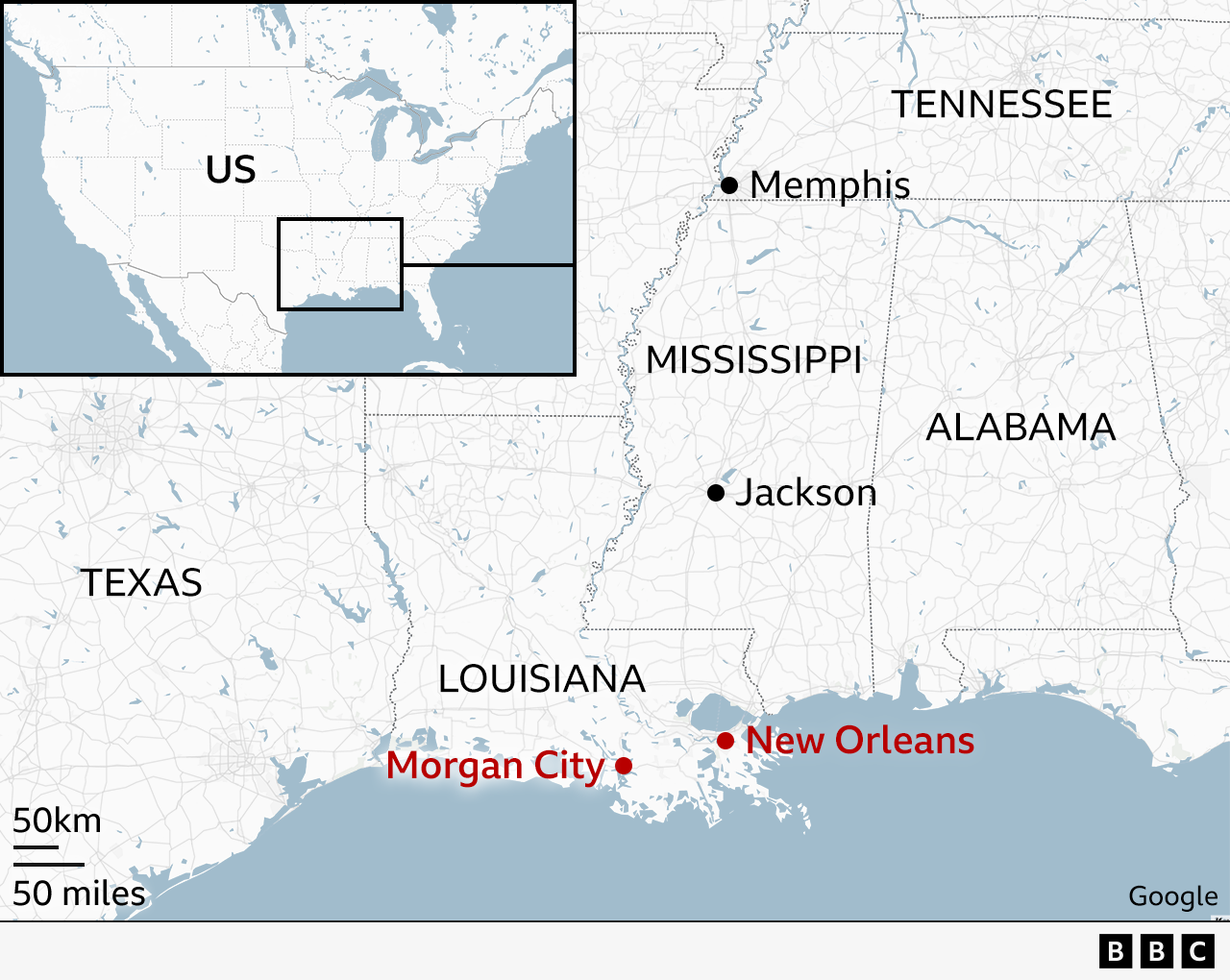
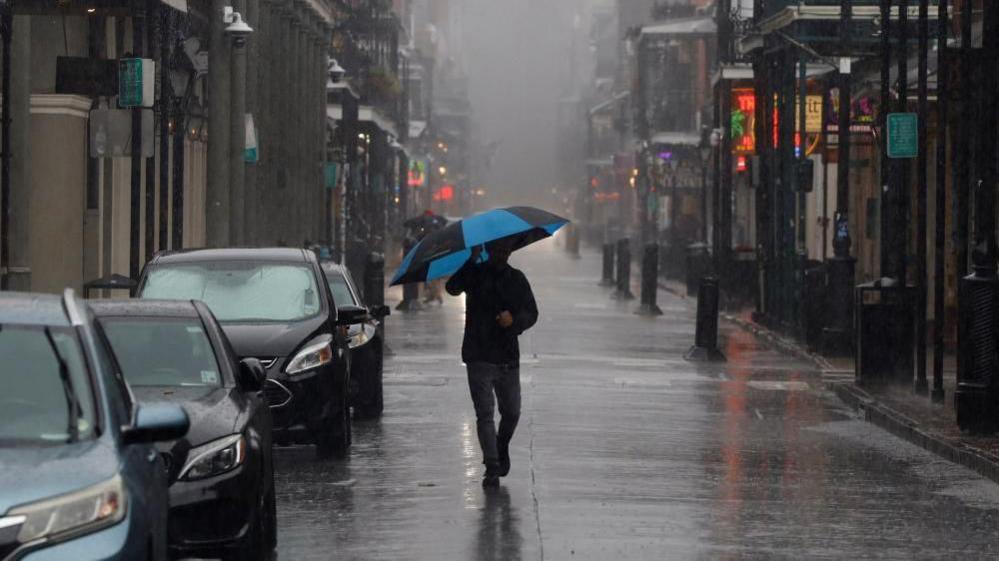
Francine brought heavy rains to New Orleans' famed Bourbon Street on Wednesday
Jefferson Parish, which neighbours New Orleans, asked residents to conserve water to prevent the sewer system backing up into homes.
Louisiana recently marked the 19th anniversary of Hurricane Katrina, which killed more than 1,800 people and caused widespread devastation.
The state mobilised resources and deployed water rescue teams before Francine arrived, the governor said, and was prepared to call on the National Guard for support if needed.
Francine’s development follows a quiet August and early September during the Atlantic hurricane season, which typically lasts until November. Experts earlier this summer had predicted a busier season.
Sarah Keith-Lucas, a weather presenter with the BBC, said the previous named storm in the region was Ernesto, back on 12 August.
"The last time we had no named storms during this same period was back in 1968. Usually, this time of the year is peak hurricane season. Last year nine named storms formed between 13 August and 8 September."
Francine is the sixth named storm of 2024.
Hurricanes are categorised on a scale of one to five. Category five storms are the most destructive, with winds in excess of 157mph (250km/h).
There were 19 named storms in last year's hurricane season.
Related topics
- Published23 May 2024
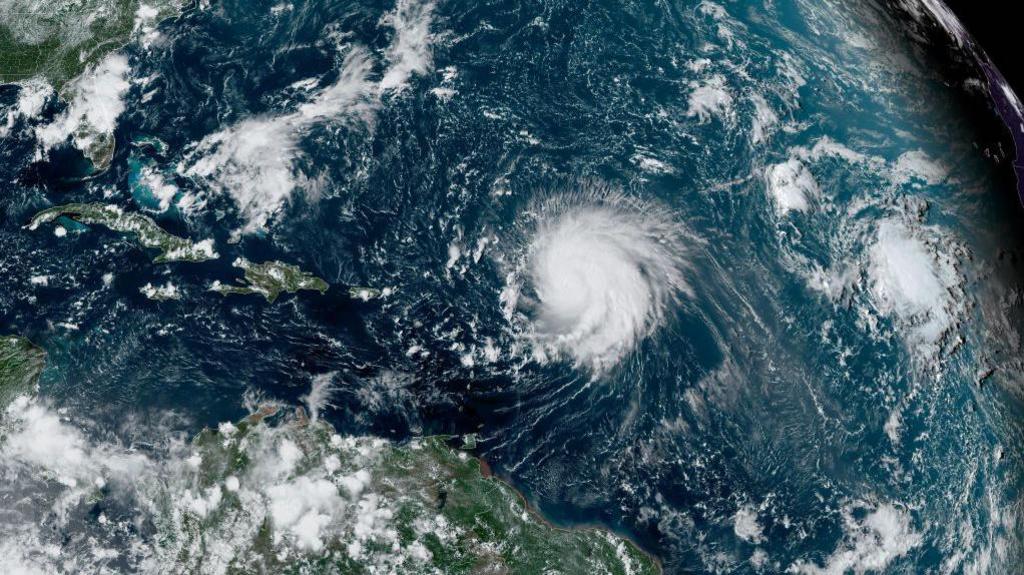
- Published16 December 2024
